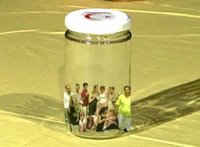Life Beyond the Green Line
Green Line. United Nations peackeepers monitor this buffer zone, which stretches 110 miles (180 kilometers) across the island. Until travel restrictions were eased in 2003, it was tough for anyone who wasn’t diplomatic or U.N. personnel to cross from one side of this Mediterranean island to the other.
Many more people can cross now, although some Cypriots are still restricted. And good luck making a phone call from one side of the island to the other side. If you know Cyprus, but you haven’t been there for a while, read my article that ran in the International Herald Tribune—Hostility Persists on Divided Cyprus—to find out what day-to-day life is like there since the crossing points opened in 2003.
But working on this project, I’ve discovered that many people know very little about Cyprus. The island has a fascinating history, sitting as it does at the crossroads of Europe and the Middle East. It’s now the easternmost part of the European Union, some 45 miles (75 kilometers) south of Turkey and 65 miles (105 kilometers) west of Syria.
The Greek part of the island, which is formally known as the Republic of Cyprus, entered the European Union on May 1, 2004—just one week after the Greek Cypriots, who make up roughly 80 percent of the island’s population, soundly defeated a referendum that would have reunified Cyprus. Although Cyprus is relatively peaceful now, peace has never been officially declared since a ceasefire in 1974, when Turkey took control of a third of the island, after a failed coup sponsored by Greece. More than a third of the people—including both Greek and Turkish Cypriots—were forced to flee their homes during the 1974 war.
The Greek Cypriots have prospered since that fatal summer. They’ve gone from living in refugee camps to presiding over some of the hottest resorts in the Mediterranean. In recent years, many of them who owned land in the part of the island that remains under their control have cashed in on soaring real estate prices. But many of their compatriots who had to flee their properties in the north in 74 still live in cookie-cutter apartment blocks, which were hastily constructed in the 1970s to house refugees south of Nicosia, a burgeoning capital city of some 200,000 people.
The Turkish Cypriots have lived in relative isloation since 74. They earn on average one-third of what the Greek Cypriots make. Their economy is entirely dependent on Turkey, which pumps some $300 million a year into north Cyprus. Most international businesses won’t open up shop on the Turkish side of the island—so there’s no McDonald’s, no Starbucks. Unsurprisingly, considering their isolation, the Turkish Cypriots voted overwhelmingly last year for the U.N.-brokered peace deal, which was known as the Annan Plan. Since then they’ve argued that the international community should lift the embargoes against them. But short of a comprehensive peace plan, there’s little hope of improving their lot.
| Learn More About Cyprus: > > Overview< < Until 1950 Since 1950 | I traveled to Cyprus last summer on a journalism fellowship from The German Marshall Fund of the United States. This program sends American journalists to cover stories in Europe that are under-reported in |
|---|
But there’s so much more to tell. I spent two months reporting in Cyprus, where I interviewed many long-time foreign diplomats and senior politicians. I attended political rallies on both sides of the island. I met Cypriots who are still waiting to learn about what happened to their family members who disappeared in 1974. And I watched the United Nations destroy some of the last landmines on EU soil.
Now, if you’d like to get up to date on Cypriot history, click on the links below.
tCr







0 Comments:
Post a Comment
<< Back to tCr Home